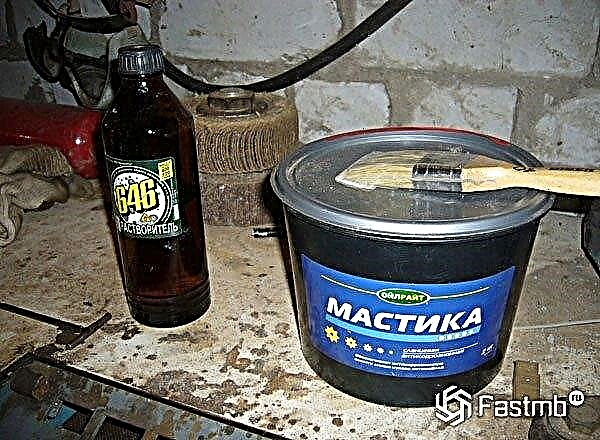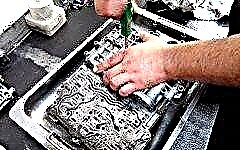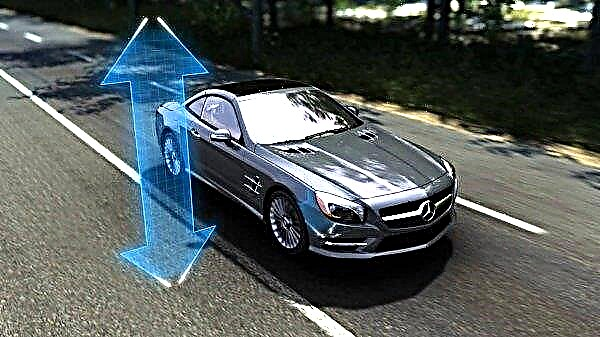Suspension Hydractive, not bad enough proved itself in terms of comfort and quality. Let's talk about the varieties, the principle of work and the components.

The content of the article:
- Suspension benefits
- Component parts
- Suspension principle
- Repair and spare parts price
The history of hydropneumatic suspension dates back to 1954. Then it was used on cars of the Citroen brand. Modern hydropneumatic suspension is better known as Hydractive, engineers have tried to introduce into it the best qualities and technologies collected over such a long period of existence.
Nowadays, the third generation hydropneumatic suspension is used, and it is used under license on Rolls-Royce, Mercedes and other expensive car brands. For the most part, the suspension structure is automated, with minimal human intervention. It happens that manufacturers refer this type to an active suspension.
The first generation of Hydractive was launched in 1989, followed by the second generation of hydropneumatic suspension in 1993. The third generation started from 2000 to the present day.
Hydractive suspension benefits

The main and most striking quality of the car's hydropneumatic suspension can be considered smooth operation and almost zero impact transfer to the body. It is also possible to adjust the ground clearance by increasing or decreasing it. The latest generation of Hydractive 3 suspension can adapt to the driver's driving style, whether it's a smooth ride or a harsh ride when cornering. Effective damping of body vibrations, reduces almost to zero cutting impacts on wheels on uneven roads.
Manufacturers who have purchased a license to use this suspension often combine it with other MacPherson type or multi-link suspension systems. The high cost and complexity of construction are the main reasons why this type of suspension is used only on expensive cars. But still, Citroen is used to the full for their cars.
An example is the C5, where the front suspension is paired with a MacPherson strut and the rear axle is paired with a multi-link suspension. This combination makes it cheaper and easier to maintain. Today the development is going in two directions, the first is the improvement of reliability, the second is the expansion of functionality.
What the suspension consists of and what the parts are for

Like any mechanism, the hydropneumatic suspension includes various parts. The Hydractive 3 suspension consists of the main parts:
- front suspension struts;
- hydropneumatic cylinders for the rear axle;
- suspension stiffness regulators;
- hydroelectronic unit;
- container for working fluid.
Each of the mechanisms fulfills its assigned role and it is not for nothing that the engineers made just such a list. Of course, with the advancement of technology, the list may change, but the main ones will remain in force. The hydropneumatic suspension also includes a hydraulic power steering circuit.
The main purpose of the hydroelectronic unit (also known as hydrotronic) is to provide the required pressure and amount of fluid in the hydraulic suspension. It also includes an electric motor, an axial piston pump, an electronic control unit, solenoid valves for adjusting the body height, a shut-off valve (designed to prevent the body from lowering when the car is not working) and a safety valve.

As a rule, a container with a working fluid is located above the hydroelectronic unit. For the suspension of the third generation Hydractive 3, an orange-colored LDS fluid is used, in the second generation, LHM was used and it was green. As for the front strut, it combines a hydropneumatic element and a hydraulic cylinder, a shock absorber valve is located between them. It is he who ensures the reduction of vibrations of the car body.
The hydropneumatic element looks like a metal sphere, inside it is divided by a multilayer membrane. Above the membrane is compressed gas, in particular nitrogen. There is usually a special liquid under the membrane. As a result, the liquid transfers pressure, and the gas acts as an elastic element of the system.
For the third generation Hydractive 3 suspension, one elastic element is installed on one wheel, and two spheres on each axle of the car. Additional elastic elements significantly expand the parameters for adjusting the stiffness of the car's suspension. In such a suspension, the spheres look gray and can go out over a distance of 200,000 km. paths.
Next on the list is the hydraulic cylinder, its main purpose is to accumulate fluid in elastic elements and adjust the height of the body relative to the road. The hydraulic cylinder consists of a piston, the rod of which is connected to the suspension arm. Both the front and rear cylinders are similar in design, but behind they are angled to the ground.
The purpose of the stiffness regulator is understandably to change the stiffness of the suspension. It includes a solenoid valve for stiffness adjustment, a spool and two shock absorber valves. An additional sphere is located on this knob. The regulator itself is installed on the rear and front suspensions. When choosing a soft suspension mode, it combines all the hydropneumatic elements, in which case the maximum volume of gas inside is reached, it is worth considering that the solenoid valve will be disconnected from the power supply. rear cylinders, as well as additional spheres will be isolated from each other. It becomes clear that the third generation hydropneumatic suspension system includes input, actuators and an electronic control unit.
Input devices often include various sensors and a suspension mode switch. The Hydractive 3 suspension uses body height sensors and a steering angle sensor. As a rule, 2 or 4 sensors are installed to measure the height of the body, but there is one steering sensor, it will take readings of the direction and speed of rotation of the steering wheel. The suspension mode select switch will force the body height and suspension stiffness.

Next comes the electronic control unit, it receives and processes commands from input devices. As a result of processing, it issues commands to hydropneumatic suspension devices that will execute these commands. It often works in tandem with the engine management system and anti-lock braking system.
The Hydractive 3 suspension actuators are a pump electric motor, solenoid valves for height adjustment and an electric headlight range control, which sets the front optics in accordance with the selected height. Under the control, the electric motor changes the rotation speed, as a result, both the pump performance and the pressure in the entire system change.
Typically, the third generation of the Hydractive suspension uses 4 solenoid valves for height adjustment, two for the front axle and two for the rear axle, respectively inlet and outlet. Often, solenoid valves are located in stiffness regulators.
How does hydropneumatic suspension work?

The main purpose of the hydropneumatic suspension is to automatically adjust the ground clearance, adjust the suspension stiffness and forcibly measure the suspension stiffness and clearance.The latter, that is, the automatic clearance adjustment takes place in accordance with the vehicle speed, the driver's driving style and the quality of the road surface. At a speed of over 110 km / h and a flat road, the ground clearance is automatically reduced by 15 mm. If the road is bad and the speed is below 60 km / h, the clearance is automatically increased by 20 mm. It is also worth considering that a certain height is automatically maintained in the car, regardless of the load.
This vehicle height is kept constant by a special fluid that circulates around the system. Thus, the hydropneumatic suspension maintains a predetermined level of the bodywork while the wheels move over uneven road surfaces.

There is also an additional suspension option, this is the Hydractive 3+, it has an automatic adjustment of stiffness depending on acceleration, straight-ahead movement, cornering and braking. For this, the control unit takes into account the vehicle speed, longitudinal and lateral acceleration, steering angle and speed, as well as other parameters that change while driving.
The system will automatically control the hardness solenoid valve, thereby making it soft or hard. Rigidity is changed both for individual elements (for each wheel) and for all wheels as a whole. Yet the engineers have provided manual control to change the ride height, thereby helping to overcome obstacles.
Repair and parts price

As we said above, hydropneumatic suspension is not a cheap pleasure and repairs, as a result, is also not cheap. For example, the price of replacing a hydraulic shock absorber is from 2000 rubles. Replacing the front stiffness regulator from 4500 rubles, and replacing the front sphere from 700 rubles. Often, as a rule, one breakdown leads to the failure of several parts.
Liquid for hydropneumatics of the third generation costs from 600 rubles, a pump for such a suspension will cost from 6000 rubles, depending on the car and the year of manufacture. It immediately becomes clear that the prices are not small, and before buying a car with such a suspension, it is worth remembering that it will need to be serviced more often than the usual one.
Citroen











